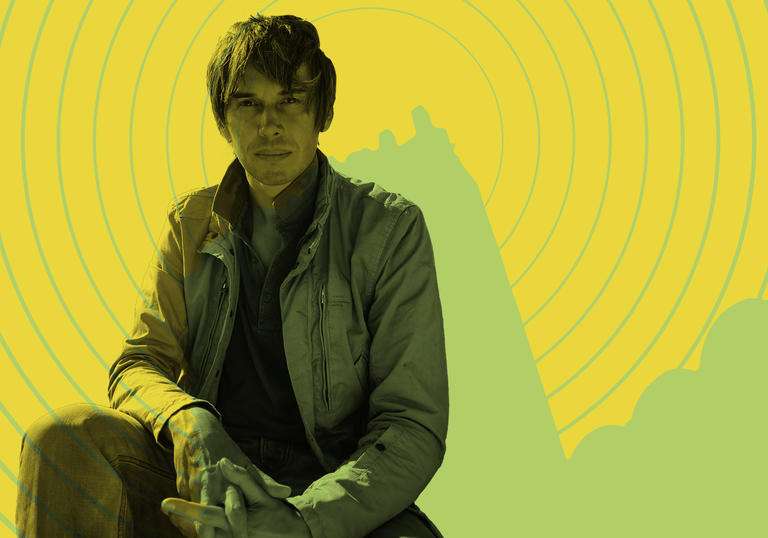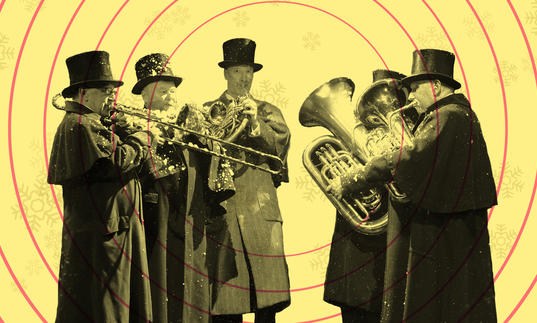Today’s concert, The Cosmos, is inspired by the idea from prominent physicist and broadcaster Brian Cox that music and science are interdependent ways in which we make sense of the world and universe around us. And he should know, for in his earlier days he was keyboard player in the prominent UK bands Dare and D:Ream.
So what links tonight’s composers? On the one hand we have Jean Sibelius and Gustav Mahler – two of the most outstanding symphonists of the Romantic tradition – while on the other the American Charles Ives was to all intents and purposes an amateur, albeit a maverick genius.
All three were influenced by what was around them in the wider world. In the case of the Finnish Sibelius, we’re lucky enough to have his diaries, which give a real clue into his mindset. While he was working on his Fifth Symphony, his diary of 21 April 1915, rhapsodises: ‘Today at ten to eleven, I saw sixteen swans. One of my greatest experiences! Lord God, what beauty! They circled over me for a long time. Disappeared into the solar haze like a gleaming, silver ribbon. Their call the same woodwind type as that of cranes, but without tremolo. The swan-call closer to the trumpet … A low-pitched refrain reminiscent of a small child crying. Nature mysticism and life’s Angst! The Fifth Symphony’s finale-theme legato in the trumpets.’
What’s so striking about this is the way Sibelius is instantly thinking technically as well as emotionally, trying to work out how to transfer this great natural phenomenon into music. And he does that to remarkable effect. One of the obvious things would be to use it at the beginning of the symphony but instead he saves his so-called ‘Swan Hymn’ for the last movement, which we hear today. But even then he makes us wait, gradually building from a dancing opening theme to reveal this noble melody, played initially on horns. Once it’s arrived, it’s as if Sibelius can’t get enough of it, and it appears in all sorts of different guises, though what’s consistent is the sense of certainty it lends to the music, right down to its final appearance on blazing trumpets.
The lives of composers can all too easily get entangled with myth, especially those that die prematurely – just think of Mozart and his Requiem. The Austrian composer-conductor Gustav Mahler is another example, and his death at just 50 came as a considerable shock to the world, even though he’d been diagnosed with a heart condition. The works that were premiered in the months after his death also seemed to be resigned and valedictory in mood – the Ninth Symphony and the great song-symphony Das Lied von der Erde (The Song of the Earth). But the truth is perhaps a little more complex, not least the discovery of his beloved wife Alma’s affair with the architect Walter Gropius, which was probably as much a factor as a physical weakness of his heart.
Mahler once described the symphony as being something that should encapsulate the entire world, delighting in juxtaposing the sublime and the banal. At his death, Mahler’s unfinished Tenth Symphony lay resting on his desk; it was a piece he’d described to a friend as ‘something entirely new’. He wasn’t exaggerating and what’s striking about the only completed movement – an extended Adagio lasting some 25 minutes – is the sense that it moves from hopelessness and tortured restlessness to life. In this movement Mahler contrasts sardonic, biting passages with great swathes of lyricism that seem to conjure vast imaginary landscapes and the music finally comes to rest with a sense of true resolution and positivity which are anything but gloomy.
It’s amazing to think that four years earlier, in 1906, Charles Ives was sketching his orchestral piece The Unanswered Question, though it didn’t see the light of day for some decades. He was in many ways the ultimate maverick, and the fact that he didn’t have to earn a living composing meant that he was free to explore. He’d gone a conventional route, studying music at Yale and producing unashamedly traditional pieces, a symphony and a string quartet among them – before deciding to throw in the towel and earn his living as a (very successful) insurance salesman.
Ives once remarked that he was ‘searching for the spirit that underlies everyone and everything in this teeming, tragicomical, singing world … A conception unlimited by the narrow names of Christian, Pagan, Jew or Angel! A vision higher and deeper than art itself’. He explores this in his brief but revolutionary Unanswered Question based on three ideas that he described as ‘The Silence of the Druids’, ‘The Perennial Question of Existence’ and ‘Fighting Answerers’. But even without knowing the subtext you hear this in the music – the sense of vastness conjured by the opening lyrical string writing (Druids), against which a lone trumpet (Questioner) sounds a plaintive element. This is set in contrast to playfully anarchic passages in the wind (Answerers). However, it is the trumpet that has the last word, suggesting that in the end it is the question rather than the answer that remains important.
© Harriet Smith
This concert is generously supported by an anonymous donor and Cockayne – Grants for the Arts and the London Community Foundation


